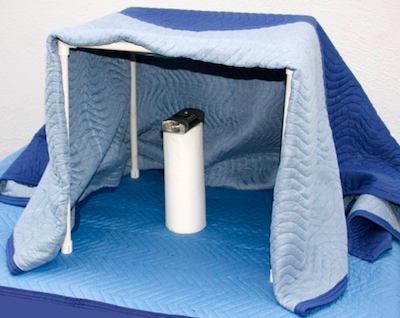My process:
Noise Reduction: about 15 dB
Every situation is different and noise reduction is just one of those things you have to experiment with. Ideally, you wouldn’t need it and if the noise is bad “the cure can be worse than the disease.”
- sounds good at 50% volume, but gets noisy at 75% volume - should I use a higher dB ? I’m scared to go too high, as I know the voice can start to sound tinny and metallic artefacts can appear.
As long as you don’t go over 0dB boosting the volume digitally doesn’t change the quality or signal-to-noise ratio. It’s the same as the listener turning-up the analog volume control. Of course when the volume is turned-up the background noise gets turned-up along with the signal so it seems worse.
Amplification: about 20 db,
That’s an indication that your recording levels are low and there might be something “wrong” with your set-up… Maybe you need to get closer to the mic or speak louder or something… Or, maybe you just need to turn-up the recording volume. Digital levels aren’t that critical (as long as you don’t “try” to go over 0dB and clip/distort) but peaks of -20dB are on the low side. Typically you should shoot-for around -6dB (peak).
to bring amplify the wave to around +7 / - 0.7 dB ie: 3/4s height - is this good practice?
Your “numbers” are confusing… 75% is about -3dB, 50% is -6dB, and 10% is -20dB. It’s OK to accept the Amplify default and hit 0dB on the peaks. But some clips will sound louder than others so you may need to bring-down the louder-sounding clips.*
Lead-in and tail-off : I leave 1/4 of a second - I’m reluctant to lengthen the lead-in especially, as the clip needs to play without ant delay (again, think DuoLingo) - but is 1/4 second too tight?
Fade-in, fade-out : usually do a double fade-in and a single fade-out. I find this helps, as any recording noises are most likely to be at the start or end
That’s an “artistic decision”. 
Voice clicks : a scourge - occur on certain sounds, and in some clips, I cannot find a way to remove them. How do DuoLingo manage to remove theirs ??
Is there a way, using Noise Reduction, to get the profile of a click, and thus remove them all from a clip?
No. Regular noise reduction is for constant background noise. There is a (automatic) Click Removal effect and a (manual) Repair effect but it might be easier just to re-record those clips.
You might take a look at the [u]Recommended Audiobook Mastering Process[/u]. Of course you don’t have to exactly meet those standards but all of your clips would be the same loudness and if you can hit the noise spec you know the noise is good enough for professional production.
Since you’re not submitting and audiobook to ACX and I suggest a couple of changes - Set the limiter to 0dB, set the RMS level (“loudness”) correspondingly 3.5dB louder to -16.5dB. Of course, that 3.5dB boost will make the ACX noise floor measurement 3.5dB “worse” but it’s not really worse because you haven’t changed the signal-to-noise ratio.

